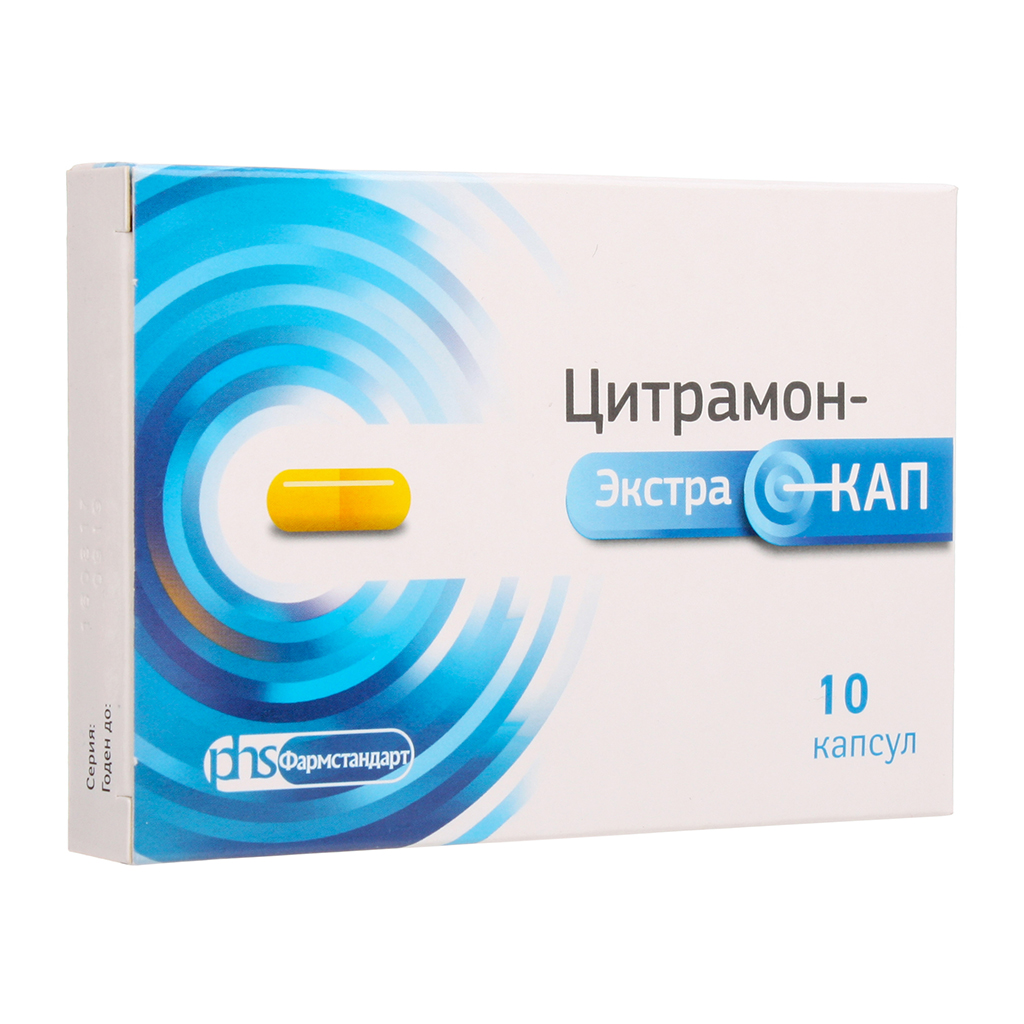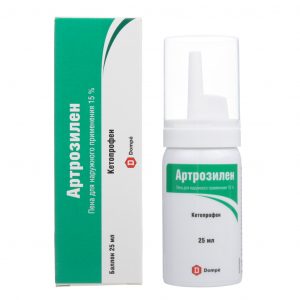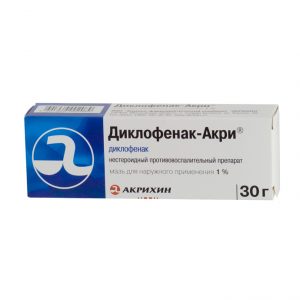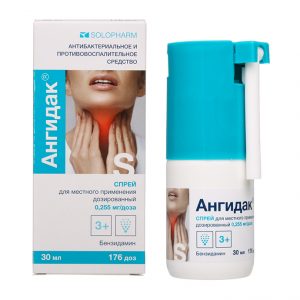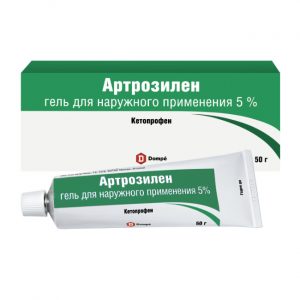Description
Pharmacological action of
Pharmacotherapeutic group:
Combined analgesic (NSAIDs + non-narcotic analgesic + psychostimulant)
ATX:
Acetylsalicylic acid combined with psycholeptics srdlkimd drug:
Acetylsalicylic acid (ASA) has an antipyretic and anti-inflammatory effect, relieves pain, especially caused by the inflammatory process, and also inhibits thrombosis, improves microcirculation in the focus of inflammation.
Caffeine increases the reflex excitability of the spinal cord, stimulates the respiratory and vasomotor centers, dilates the blood vessels of the skeletal muscles, brain, heart, kidneys, reduces platelet aggregation, reduces drowsiness, and tiredness. increases mental and physical performance. In this combination, caffeine in a small dose practically does not have a stimulating effect on the central nervous system, increases the tone of cerebral vessels and helps accelerate blood flow.
Paracetamol has an analgesic, antipyretic and mild anti-inflammatory effect, due to its effect on the thermoregulation center in the hypothalamus and mild ability to inhibit prostaglandin synthesis in peripheral tissues.
Pharmacokinetics:
ASA: ingestion, absorption is complete. During absorption, it undergoes presystemic elimination in the intestinal wall and systemic in the liver (deacetylated). The resorbed portion is rapidly hydrolyzed by cholinesterase and albuminesterase, therefore, the half-life is no more than 15-20 minutes. It circulates in the body (75-90% due to albumin) and is distributed in tissues as an anion of salicylic acid. The time to reach a maximum concentration of -2 hours. Metabolized mainly in the liver with the formation of 4 metabolites found in many tissues and urine. It is excreted by active secretion in the tubules of the kidneys in the form of salicylate (60%) and its metabolites. Excretion of unchanged salicylate depends on the pH of the urine (with alkalization of urine, ionization of salicylates increases, their reabsorption worsens, and excretion increases significantly). The elimination rate depends on the dose: when taking small doses, the elimination half-life is 2-3 hours, with an increase in dose it can increase up to 15-30 hours. In newborns, the elimination of salicylates is much slower than in adults.
Paracetamol: adsorption high, the maximum concentration is reached after 0.5-2 hours and is 5-20 Ñg / ml, the connection with plasma proteins is 15%. Penetrates through the blood-brain barrier. Less than 1% of the dose taken by the nursing mother passes into breast milk. A therapeutically effective plasma concentration of paracetamol is achieved when taken at a dose of 10-15 mg / kg. It is metabolized in the liver (90-95%): 80% undergoes a conjugation reaction with glucuronic acid and sulfates to form inactive metabolites 17% undergoes hydroxylation with the formation of 8 active metabolites, which conjugate with glutathione to form already inactive metabolites. With a lack of glutathione, these metabolites can block the hepatocyte enzyme systems and cause their necrosis. The isoenzyme 2 1 is also involved in metabolism. The elimination half-life is 1-4 hours. It is excreted by the kidneys in the form of metabolites, mainly in the form of conjugates. Only 3% are excreted unchanged. In elderly patients, the clearance of the drug decreases and the elimination half-life increases.
Caffeine: when taken orally, absorption is good and occurs throughout the intestine. Absorption occurs mainly due to lipophilicity, and not water solubility. The maximum concentration is reached after 50-75 minutes and is 1.58-1.76 mg / L. It is quickly distributed in all organs and tissues of the body: it easily penetrates the blood-brain barrier and the placenta. The distribution volume in adults is 0.4-0.6 l / kg, in newborns – 0.78-0.92 l / kg. Communication with blood proteins (albumin) – 25-36%. Metabolism in the liver is exposed to more than 90, in children of the first years of life up to 10-15%. In adults, about 80% of the dose of caffeine is metabolized to paraxanthin, about 10% to theobromine, and about 4% to theophylline, which are subsequently demethylated to monomethylxanthines, and then to methylated uric acids. The half-life in adults is 3.9-5.3 hours (sometimes up to 10 hours), in newborns – 65-130 hours (by 4-7 months of life it decreases to the value as in adults). Excretion of caffeine and its metabolites is carried out by the kidneys (unchanged in adults, 1-2% is excreted, in newborns – up to 85%).
Indications
Mild to moderate pain syndrome (of various origins): headache, migraine, toothache, neuralgia, myalgia, arthralgia, algomenorrhea. Feverish syndrome: with acute respiratory infections, flu.
Contraindications
– Peptic ulcer of the stomach and duodenum in the acute phase
– Gastrointestinal bleeding or perforation, peptic ulcer in the anamnesis
– Severe renal or hepatic insufficiency Surgery followed by heavy bleeding
– Pregnancy, breastfeeding
– Deficiency of glucose-6-phosphate dehydrogenase
– Glaucoma
– Hypersensitivity l to the components of the drug
– Complete and incomplete combination of bronchial asthma, recurrent polyposis of the nose and paranasal sinuses and intolerance to ASA or other non-steroidal anti-inflammatory drugs (including a history of)
– Children under 15 years of age as an anesthetic, for febrile syndrome – up to 18 years of age
– Increased irritability, sleep disorders
diseases of the cardiovascular system (including acute myocardial infarction, atherosclerosis)
– Severe arterial hypertension
– Portal hypertension
– Chronic heart failure III-IV functionally of class NYHA
– Simultaneous treatment with methotrexate over 15 mg per week
– Vitamin deficiency K
– Hypoproteinemia.
Precautions:
Gout, hyperuricemia, peptic ulcer and duodenal ulcer, chronic obstructive pulmonary disease, hay fever, nasal polyposis, drug allergy, concomitant use of methotrexate in a dose of less than 15 mg / week, concomitant therapy with anticoagulants, non-steroidal anti-inflammatory drugs, glucocorticosteroids, antiplatelet agents, selective serotonin reuptake inhibitors.
Mild to moderate renal failure, mild to moderate hepatic failure with an increase in transaminases, benign hyperbilirubinemia (including Gilbert syndrome, alcoholic liver damage), alcoholism, epilepsy and a tendency to seizures, advanced age, gout, arterial hypertension, chronic heart failure I-II functional class according to NYHA, coronary heart disease, cerebrovascular disease, peripheral arterial disease, smoking.
If you have one of the listed diseases / conditions, be sure to consult your doctor before taking the drug.
Special instructions
General
This medicine should not be taken simultaneously with medicines containing ASA or paracetamol.
Like other treatments for migraine, patients who have not previously been diagnosed with migraine or those who have atypical symptoms of migraine before starting treatment for suspected migraines should be careful to rule out other potentially serious neurological disorders.
If vomiting occurs in patients with> 20% of migraine attacks or they require bed rest in> 50% of attacks, the drug should not be used.
If migraine does not stop after taking the first two tablets, you should seek medical help.
The drug should not be used, if for at least the last three months the patient has had more than 10 episodes of headache per month. In this case, you should suspect a headache due to excessive use of drugs and cancel treatment. In addition, patients should seek medical attention. Caution should be exercised in patients with risk factors for dehydration, such as vomiting, diarrhea, either before or after major surgery.
Due to its pharmacodynamic properties, the drug can mask the signs and symptoms of infection.
Due to its content of
acetylsalicylic acid, the drug should be used with caution in patients with gout, impaired renal or hepatic function, dehydration, uncontrolled arterial hypertension, glucose-6-phosphate dehydrogenase deficiency and diabetes mellitus.
Due to the inhibition of ASA platelet aggregation, the drug can lead to an increase in bleeding time during and after surgical interventions (including small ones, for example, tooth extraction).
The drug should not be used simultaneously with anticoagulants and other drugs that interfere with blood coagulation, without the supervision of a doctor (see section Interaction with other drugs). Patients with blood clotting disorders should be closely monitored. Caution should be exercised during metro or menorrhagia.
If a patient develops bleeding or ulceration of the gastrointestinal tract while taking the drug, you must immediately cancel it. Potentially fatal bleeding may occur at any time during treatment with any NSAIDs. ulceration and perforation of the gastrointestinal tract both with precursors and severe gastrointestinal complications in the anamnesis, and without them. These complications are usually more severe in older patients. Alcohol, glucocorticosteroids, and NSAIDs may increase the risk of gastrointestinal bleeding (see Interaction with Other Medicines section). The drug can contribute to the development of bronchospasm and the occurrence of exacerbation of bronchial asthma (including bronchial asthma due to intolerance to analgesics) or other hypersensitivity reactions. Risk factors include asthma, seasonal allergic rhinitis, nasal polyposis, chronic obstructive pulmonary disease, chronic respiratory infections (especially those associated with symptoms characteristic of allergic rhinitis). Such phenomena can also occur in patients with allergic reactions (for example, skin, including itching and urticaria) to other substances. In such patients, extreme caution is recommended.
Children under 18 years of age should not be prescribed medicines containing acetylsalicylic acid as an antipyretic, since in the case of a viral infection they can increase the risk of Reye’s syndrome. Symptoms of Reye’s syndrome are hyperpyrexia, prolonged vomiting, metabolic acidosis, disorders of the nervous system and psyche, hepatomegaly and impaired liver function, acute encephalopathy, respiratory failure, convulsions, coma.
ASA may distort the results of laboratory tests of thyroid function due to false positive low concentrations of levothyroxine (T4) and triiodothyronine (T3) (see section Interaction with other medicines).
Due to paracetamol
, caution should be exercised when administering the drug to patients with impaired renal or hepatic function or alcohol dependence.
The risk of paracetamol poisoning is increased in patients taking other potentially hepatotoxic drugs or drugs that induce microsomal liver enzymes (e.g. rifampicin, isoniazid, chloramphenicol, hypnotics, and anticonvulsants, including phenobarbital, phenytoin, and carbamazepine). Patients with a history of alcoholism are at particular risk for liver damage (see Interaction with other drugs).
When using the drug may
Due to paracetamol
, caution should be exercised when administering the drug to patients with impaired renal or hepatic function or alcohol dependence.
The risk of paracetamol poisoning is increased in patients taking other potentially hepatotoxic drugs or drugs that induce microsomal liver enzymes (e.g. rifampicin, isoniazid, chloramphenicol, hypnotics, and anticonvulsants, including phenobarbital, phenytoin, and carbamazepine). Patients with a history of alcoholism are at particular risk for liver damage (see Interaction with other drugs).
When using the drug may
Due to paracetamol
, caution should be exercised when administering the drug to patients with impaired renal or hepatic function or alcohol dependence.
The risk of paracetamol poisoning is increased in patients taking other potentially hepatotoxic drugs or drugs that induce microsomal liver enzymes (e.g. rifampicin, isoniazid, chloramphenicol, hypnotics, and anticonvulsants, including phenobarbital, phenytoin, and carbamazepine). Patients with a history of alcoholism are at particular risk for liver damage (see Interaction with other drugs).
When using the drug may
The risk of paracetamol poisoning is increased in patients taking other potentially hepatotoxic drugs or drugs that induce microsomal liver enzymes (e.g. rifampicin, isoniazid, chloramphenicol, hypnotics, and anticonvulsants, including phenobarbital, phenytoin, and carbamazepine). Patients with a history of alcoholism are at particular risk for liver damage (see Interaction with other drugs).
When using the drug mayserious skin reactions, such as acute generalized exanthematous pustulosis, Stevens-Johnson syndrome, toxic epidermal necrolysis, which can be fatal, can occur. Patients should be informed of signs of serious skin reactions. The drug should be discontinued at the first manifestations of skin reactions or any other signs of hypersensitivity.
Due to its caffeine content
, the drug should be used with caution in patients with gout, hyperthyroidism, and arrhythmia.
When using the drug, you should limit the intake of products containing caffeine, since excessive intake of caffeine can lead to nervousness, irritability, insomnia, and, in some cases, increased heart rate.
Effect on laboratory studies
High doses of ASA can distort the results of a number of clinical and biochemical laboratory studies.
The use of paracetamol may affect the results of the determination of uric acid by the method of phosphoric tungsten acid and glycemia by the glucose oxidase / peroxidase method.
Caffeine can reverse the effects of dipyridamole on blood flow in the myocardium, thereby distorting the results of this study. During the study, it is necessary to refrain from taking caffeine for 8-12 hours.
Impact on the ability to drive transp. Wed and fur .:
During the use of the drug should refrain from driving vehicles and working with other mechanisms, as caffeine, which is part of the drug, can cause disturbances in concentration and speed of reactions, and acetylsalicylic acid, also part of the drug, may in rare cases cause dizziness.
Composition of
Active ingredients: acetylsalicylic acid – 240.0 mg, paracetamol – 180.0 mg, caffeine – 27.45 mg
excipients: citric acid (citric acid monohydrate) – 5.00 mg, potato starch – 20, 95 mg, talc – 10.00 mg, low molecular weight povidone (low molecular weight polyvinylpyrrolidone 12600 ± 2700 or K-17) – 3.00 mg, calcium stearate – 1.00 mg, colloidal silicon dioxide (aerosil) – 2.60 mg. Hard gelatin capsules No. 00.
Composition of the capsule shell (body and cap): titanium dioxide (E 171) – 2.6666%, quinoline yellow (E 104) – 1.8394%, sunset sunset dye yellow (E 110) – 0.0088%, gelatin – up to 100%.
Dosage and administration of
The drug should not be taken for more than 5 days as an analgesic drug and more than 3 days as an antipyretic (without prescribing and monitoring a doctor).
Inside (during or after a meal, drinking plenty of water at each dose).
In case of headache, the recommended dose is 1-2 capsules, in case of severe headache, the next dose after 4-6 hours.
In case of migraine, the recommended dose is 2 capsules when symptoms appear, if necessary, take again after 4-6 hours. For treatment of headache and migraine, the drug is used for no more than 4 days.
For pain – 1-2 capsules, the average daily dose is 3-4 capsules, the maximum daily dose is 8 capsules.
The course of treatment is no more than 3-5 days.
Elderly (over 65 years old)
Caution should be exercised in older patients, especially those with low body weight.
Patients with hepatic and renal failure
The effect of impaired liver or kidney function on the pharmacokinetics of the drug has not been studied. Given the mechanism of action of acetylsalicylic acid and paracetamol, their use can aggravate renal and hepatic failure. In this regard, the drug is contraindicated in patients with severe hepatic or renal failure (see section Contraindications), and in case of hepatic and renal failure of mild to moderate degree it should be used with caution (see section With caution).
Side effects
Gastralgia, nausea, vomiting, hepatotoxicity, nephrotoxicity, erosive-ulcerative gastrointestinal tract, allergic reactions (including Stevens-Johnson syndrome, Lyell), tachycardia, increased blood pressure, bronchospasm.
Overdose
Acetylsalicylic acid
For light intoxications – dizziness, tinnitus, deafness, increased sweating, nausea, vomiting, headache and confusion. Occurs at a plasma concentration of 150-300 μg / ml. Treatment – dose reduction or withdrawal of therapy. At concentrations above 300 μg / ml, more severe intoxication occurs, manifested by hyperventilation, fever, anxiety, ketoacidosis, respiratory alkalosis and metabolic acidosis. Inhibition of the central nervous system can lead to coma, and cardiovascular collapse and respiratory failure can also occur.
The greatest risk of chronic intoxication is observed in children and the elderly when taken for several days more than 100 mg / kg / day.
Treatment
If you suspect that more than 120 mg / kg of salicylates has been received, activated charcoal is injected multiple times over the last hour.
When taking more than 120 mg / kg of salicylates, their plasma concentration should be determined, although it is impossible to predict its severity only on the basis of this indicator, it is also necessary to take into account clinical and biochemical parameters.
If the plasma concentration exceeds 500 mcg / ml (350 mcg / ml for children under 5 years of age), intravenous administration of sodium bicarbonate effectively removes salicylates from the plasma. If the plasma concentration exceeds 700 mcg / ml (lower concentrations in children and the elderly) or in severe metabolic acidosis, hemodialysis or hemoperfusion is the treatment of choice.
An overdose of paracetamol
In case of an overdose, intoxication is possible, especially in elderly patients, children, patients with liver diseases (caused by chronic alcoholism), in patients with nutritional disorders, as well as in patients taking inducers of microsomal liver enzymes, in which fulminant hepatitis, liver failure, cholestatic hepatitis, cytolytic hepatitis can develop, in the above cases – sometimes with a fatal outcome.
The clinical picture of acute overdose develops within 24 hours after taking paracetamol.
Symptoms: gastrointestinal disorders (nausea, vomiting, loss of appetite, discomfort in the abdominal cavity and (or) abdominal pain), pallor of the skin. With the simultaneous administration of 7.5 g or more to adults or children over 140 mg / kg, cytolysis of hepatocytes occurs with complete and irreversible liver necrosis, development of liver failure, metabolic acidosis and encephalopathy, which can lead to coma and death. 12-48 hours after the administration of paracetamol, an increase in the activity of microsomal liver enzymes is noted, lactate dehydrogenase, bilirubin concentrations and a decrease in prothrombin content. Clinical symptoms of liver damage appear 2 days after an overdose of the drug and reach a maximum of 4-6 days.
Treatment
Immediate hospitalization.
Determination of the quantitative content of paracetamol in blood plasma before treatment as early as possible after overdose. The introduction of SH-group donors and precursors of glutathione synthesis – methionine and acetylcysteine – is most effective in the first 8 hours.
The need for additional therapeutic measures (further administration of methionine, iv administration of acetylcysteine) is determined depending on the concentration of paracetamol in the blood, as well as on the time elapsed after its administration.
Symptomatic treatment.
Laboratory studies of the activity of microsomal liver enzymes should be carried out at the beginning of treatment and then every 24 hours.
In most cases, the activity of microsomal liver enzymes normalizes within 1-2 weeks. In very severe cases, a liver transplant may be required.
Caffeine
Common symptoms are gastralgia, agitation, delirium, anxiety, nervousness, anxiety, insomnia, mental agitation, muscle twitching, confusion, cramps, dehydration, rapid urination, hyperthermia, headache, increased tactile or nausea pain, nausea, and pain (sometimes with blood), tinnitus. With severe overdose, hyperglycemia may occur. Cardiological disorders are manifested by tachycardia and arrhythmia.
Treatment – dose reduction or withdrawal of caffeine.
Storage conditions
Store at a temperature not exceeding 25 ° C.
Keep out of the reach of children.
Expiration
2 years.
Terms and conditions
without prescription
Dosage
capsule form
